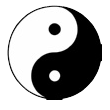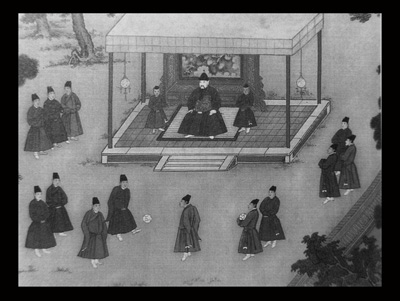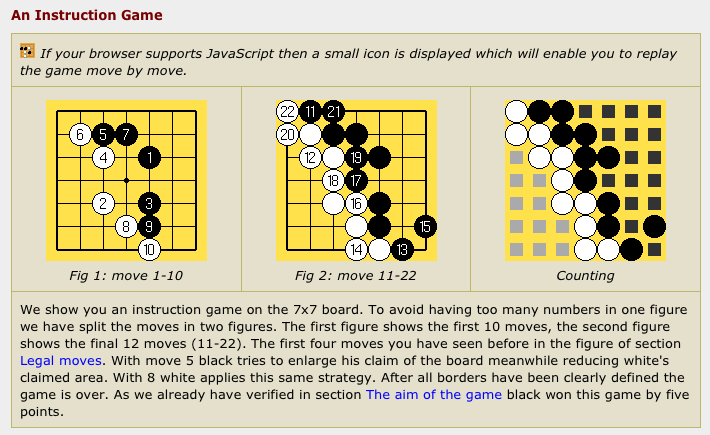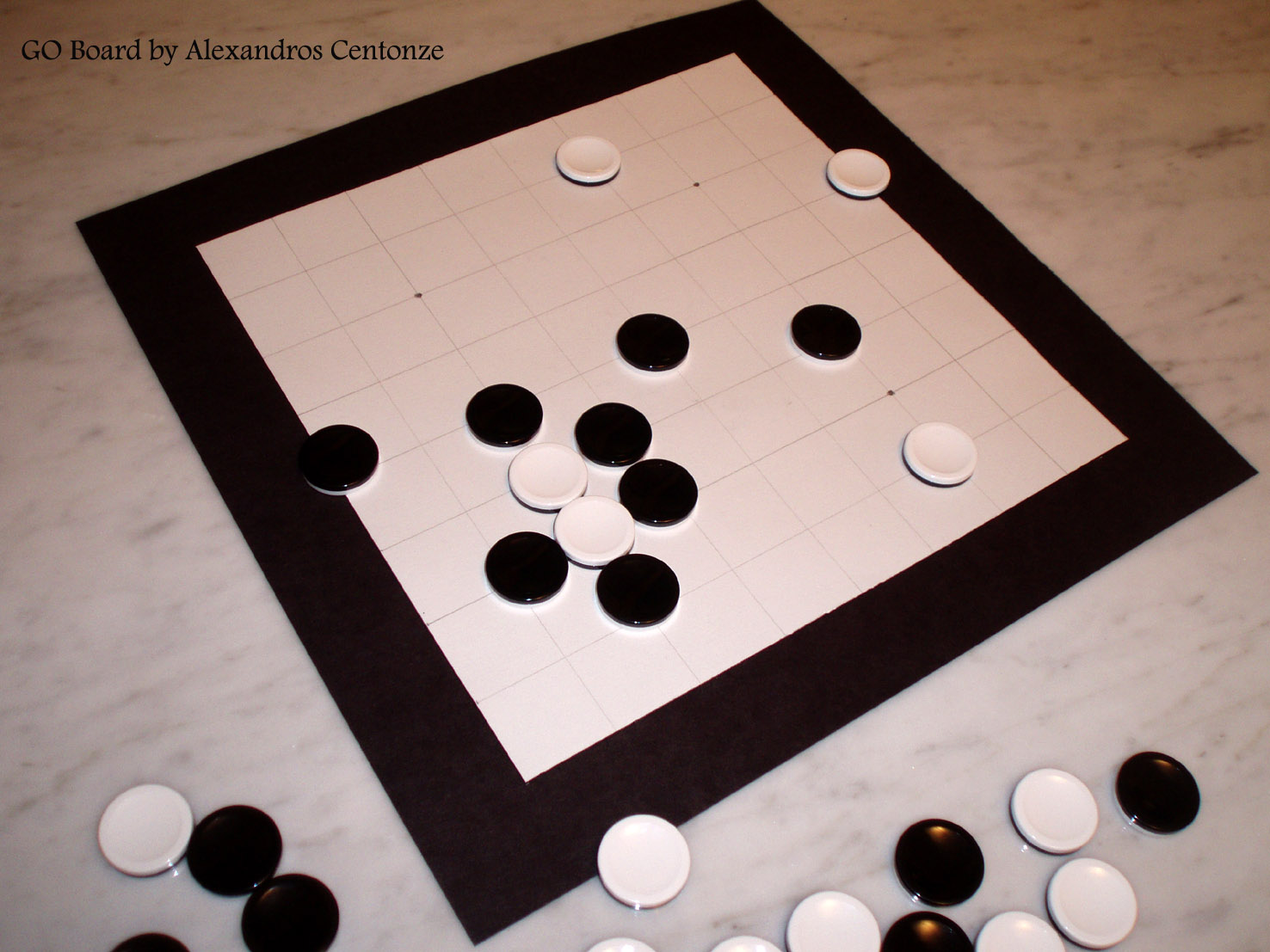CHINA AND THE GAME OF GO

Overview
The creativity of the ancient Chinese is reflected in their philosophy, artistic accomplishments and inventions. It has also inspired a number of unique games. In this unit, you will investigate the wide range of China’s contributions to the world and experience the game of Go, which balances tactics and strategy. Let’s get started!
Ancient China - A Fascinating History
China, located in southeast Asia, has a long history that is filled with fascinating facts and elements of culture. Some of the world's oldest civilizations flourished there. The early Chinese people farmed the land, founded cities, set up powerful governments and established trade routes to the West. They wrote great works of literature and and created complex writing systems. Their technological accomplishments are very different from those of ancient Egypt and the Roman Empire. In fact, China was more advanced than the nations of Europe prior to 1500. When you watch the video by clicking on the icon below, you may be surprised at the number of inventions developed in ancient China.
As the video points out, the Chinese are responsible for a number of significant inventions, such as the compass, paper, silk, porcelain and gunpowder. The web sites below include even more interesting information about ancient China.

Smith College Museum of Ancient Inventions
Chinese Culture
Chinese Science and Culture
Oriental Culture and the Game of Go
Games originating from the Orient are often difficult for Westerners to understand. Games are outward expressions of the character and concerns of the society that invented them. This is especially true with Go. The game also reflects yin and yang, a concept that is central to Chinese philosophy, science and the martial arts. Opposing forces, at least on the surface, appear to be polar opposites, but they are actually interconnected. The Chinese consider dualities, such as male/female, light/dark and hot/cold, to be expressions of yin and yang.
Go originated in China in the 4th century, moved to Korea in the 5th century, and reached Japan in the 7th century. It did not become popular in the West until the late 19th century. Go continues to be a popular game.

Similar to Ur and Senet, the game of Go was a metaphor and divination device that reflected man and his relationship to the universe. Originally, Go was a game played only by the aristocracy, while Chinese Checkers was a game of the common man.
The game is played by two players who alternate placing black and white stones at intersections in a 19 x 19 grid. Once placed on the board, the pieces cannot be moved, although they can be captured. The object of the game is to capture (surround) a larger portion of the board than your opponent. Placing stones close together creates matrices of supporting interdependency while placing them further apart spreads influence across the board. It is the balance between these two strategies that creates the depth of game play. Players try to balance tactics and strategy with short-term and long-term plans at the same time.
Go and War Strategy
Sun Tzu's Art of War is a Chinese Military treatise that was written in the 6th century and has had a great influence over modern military thought. His ideas became even more significant when the West encountered the Eastern powers in the 20 th century. Unlike the direct assault approach favored by Western military strategists, Tzu suggested that position is critical; it is affected by physical conditions, emotional momentum and flexibility. For example, small armies have flexibility and can react more quickly than massive ones. The Vietnam War can be analyzed with Sun Tzu's philosophies. Even though the North Vietnamese had fewer forces, they were more flexible and better-positioned than the larger, more powerful U.S. military.
How to Play Go
Western games tend to put the pieces in the spaces (Checkers, Chess), while Go places the pieces at the intersections of the spaces. In Western games, the pieces can have roles (the King and Queen in Chess or Checkers), while the pieces in Go have no direct link. This makes the game more abstract. There is no climactic ending as in Chess. Players new to Go often have a hard time figuring out when the game is over. Western games often create their complexity from density of rules. Go creates its complexity from subtle evaluations of positional play and simple rules.
The Rules
The rules can be found here. The best way to use this set of instructions is to follow along as they animate the moves.
Go is played on a square board consisting of any number of crossing lines. The usual board sizes are 9 x 9, 13 x 13, or 19 x 19 lines, 19 x 19 is the official tournament size.
Start with an empty 7 x 7 board. The dark spot in the middle of the board is useful for orientation, but it is also an indicator. See the section titled Handicap.
A Go move is played on the intersections of the lines. This is different from what you are used to from other games like chess and checkers. In the figure below , you can see the first four moves of an instruction game . The moves are numbered to indicate the order in which they were played. That’s right! In Go, the black pieces move first! Another legal move, hard to display in a figure, is pass. When both players pass, the game is finished.

During a Go game, one or more stones can be captured by completely surrounding them. For instance, a player may fill all the empty points around an opponent’s stones. In the instruction game, you can see two examples: on the left a one stone capture, on the right a three stone capture. As pictured in the first diagram, once black has played, the white stones are removed from the board. This leads to the positions shown in the second diagram.
The purpose of Go is to conquer a larger part of the board than your opponent. The conquered part consists of the stones placed on the board plus the stones which could be added safely, i.e. inside your own walls. The figure shows a final position. Let’s see how the game is scored. Black has 11 stones on the board and could add 16 stones inside his own walls. White has 11 stones on the board and could add 11 stones inside his own walls. This makes the score 11+16 - 11+11 = 5 points for black. Black won this game.

The instruction game is shown on the 7x7 board. To avoid having too many numbers in one figure , we split the moves in two figures.

The first figure shows the first 10 moves, and the second figure shows the final 12 moves (11-22). You already saw the first four moves. With move 5, black tries to enlarge his claim of the board while reducing white's claimed area. With 8, white applies this same strategy. After all borders have been clearly defined, the game is over. Black won this game by five points.
Since black had the advantage of moving first, you might argue that it is not fair that this player won the instruction game. You are correct. That's why white receives compensation for moving second. This compensation is called komi (Japanese).
Remarkably, the komi does not depend on the board size. According to Japanese professional Go players, the komi should be 5½ points for the board sizes 9x9, 13x13 and 19x19. In the instruction game, we played on a 7x7 board. If the komi was also 5½ points, then white would have won the above game with ½ point, the smallest margin possible.
The Ko Rule
Sometimes Go can become monotonous when both players are in a position to make a capture. In other words, one player could make a capture. On the next turn, the opposing player could capture right back. This situation could continue for a very long time! The Ko or Japanese Rule was written to prevent this and to ensure the progress of the game. According to the rule, a player cannot make a capture that puts the board right back to where it was. If a capture has the potential to result in moving a single stone back and forth, the player cannot make the move and must play somewhere else on the board. On the next turn, the opposing player can move to the capture space. If the opposing player does not take advantage of this, the first player is free to make the move and to capture the piece.
See an example of the Ko Rule in action here.
Handicap
One of the (many) nice features of Go is that you don't need an opponent of equal strength/experience to have an exciting game. The Go game allows you to equalize the players' chances to win by adding some initial stones on the board. The number of stones added depends on the strength difference between the two players. The number of stones added depends on the strength difference between the players. A small difference results in a small number of additional stones for the weaker player; a large difference results in a large number of stones for the weaker player.
Play Go
Now that you are familiar with the rules for Go, try making your own game board from materials of your choosing. First, decide on the size of the game board. For example, are you going to base your game on seven squares by seven squares or nine squares by nine squares? Once you have made this decision, design your game based on the examples shown in the unit. You can also conduct an Internet search for more ideas. Create a traditional version with a black and white theme or choose two other contrasting colors. If you do select other colors, however, remember to designate which one always goes first. What kind of pieces are you going to use to play Go? You can make your own or find objects, such as pieces from other games. Your pieces should fit the size of your game board.
Here is an example of a student-made Go board.

Once you have completed your game board and pieces, play several games of Go with family and/or friends. Play as the starting player and as the second player. Try completing the game with and without the Ko Rule.
